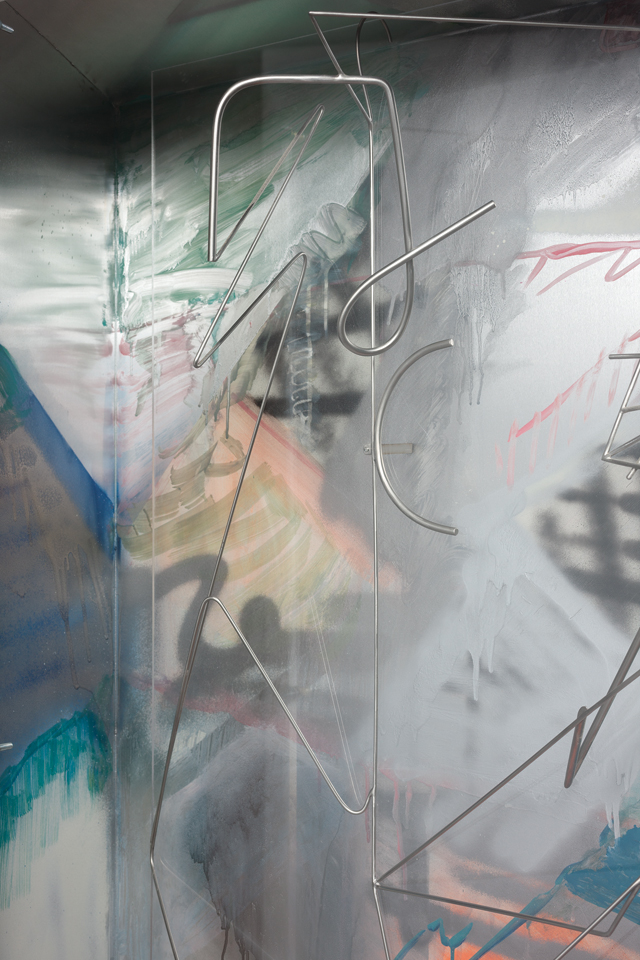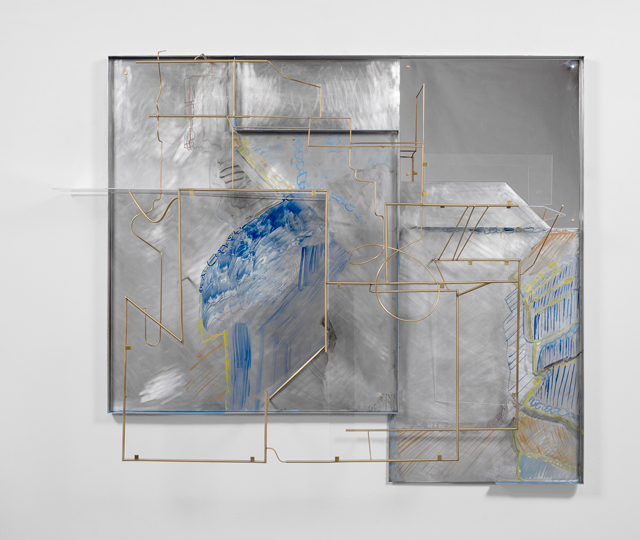Sara Barker
The Fruitmarket Gallery, Edinburgh, UK
The Fruitmarket Gallery, Edinburgh, UK

Sara Barker’s sculptures are mathematical objects plotted along vertical and horizontal lines, but they are also lean acrobats that flex off the gallery walls: poised female bodies. A solo exhibition of 18 works at Edinburgh’s The Fruitmarket Gallery demonstrates the artist’s ongoing enquiry into the body as a room and the boundaries of personal space. Barker often cites modernist literature as the starting point for her sculptures, in particular the writing of Virginia Woolf and Gertrude Stein, both masters of the psychological interior. As Woolf famously argued, a room of one’s own is an integral condition for creative freedom – not only as a metaphor for interiority or a site for epiphany but, more importantly, a private domain, and one she demonstrated was rarely available to women.
‘CHANGE-THE-SETTING’ is organized across two floors, which Barker employs as separate ‘acts’. The first is populated by withdrawn, brooding figures that shadow the walls, often turning inwards. sampler (2013), for example, is a crouching figure made of folded steel rods and shreds of aluminium pegged back together. It’s akin to a ragged arte povera assembly and flaunts its bolts, buckles and scuffs with a scavenger’s wry grin. Meanwhile, Woman at the Window (2012), also drawn with strips of aluminium, recalls a skinny ballerina, standing upright at human-height and frisking the floor with two silver slippers. These sculptures begin as paintings: Barker cuts into the sheets of metal until only slivers of it are left, glimpses of silver and blue brushmarks. One feels these figures are on brink of something, but it’s hard to say exactly what. Are they high modernist ballerinas stepping out onto the stage, or secretive writers pulling down the blinds? Are they portraits, I wonder, of Woolf?

Alongside the figures, Barker displays a set of three light-boxes (all 2016), which can be read as self-contained rooms or private spaces of work. They are small, staged habitats sunk into the gallery walls, as in a reptile house. The warm lairs are decorated with misty green and burnt umber, and sealed behind Perspex windows. In one chamber, wire has taken root and sprouts a spiky, secret alphabet, as if a language is incubating.
Another set of hanging aluminium trays (all 2016) is protected by hooks and flicks of brass wire. But peer between the spikes and you will see a painted interior – a living room emerging from the unprimed metal and its darkroom of greys. There’s a mulberry settee and watery teal carpet redolent of an exquisite impressionist-era parlour in which a woman sits by the window. It’s the most explicit figure Barker offers – no longer a silhouette with posed slippers, but a painted form. Its title, The Work We Do while We Wait (2016), suggests that work, at least in this room, is a lingering moment of reflection: the mind, as much as the room, is a space of shelter and privacy.

Upstairs, Barker’s sculptures have grown in size and prowess, as if nurtured by the quiet parlours below. Metamorphosis of Friends (2016), a freestanding sculpture that no longer needs the wall, dangles curling letters and ciphers. In another piece, Film of Dust on Ruins (2016), translucent paintings float like apparitions in mid-air, held aloft by offshoots of wire. Most strikingly of all, The Letters F&M Are Characters (2016) is a large aluminium sheet, this time left whole, which offers up its painted surface without reserve. As the exhibition’s title suggests, there’s been a change of setting, a departure from the room, as Barker dispenses with the grid and flexes a language of her own.






















